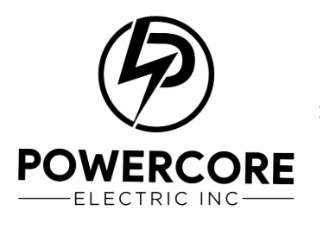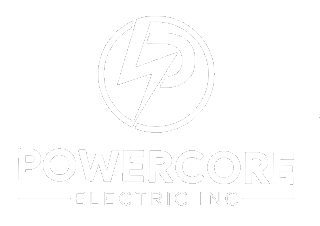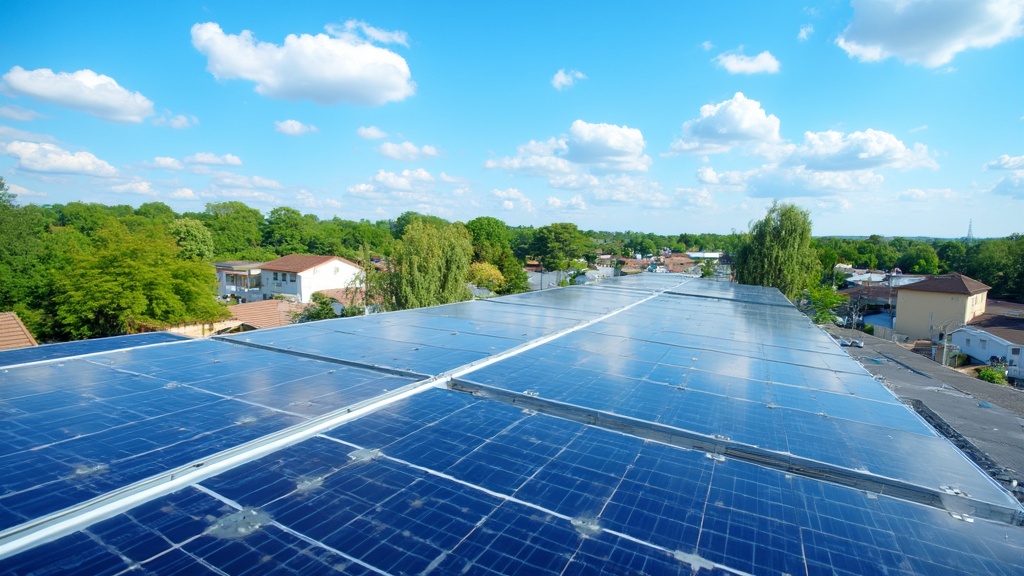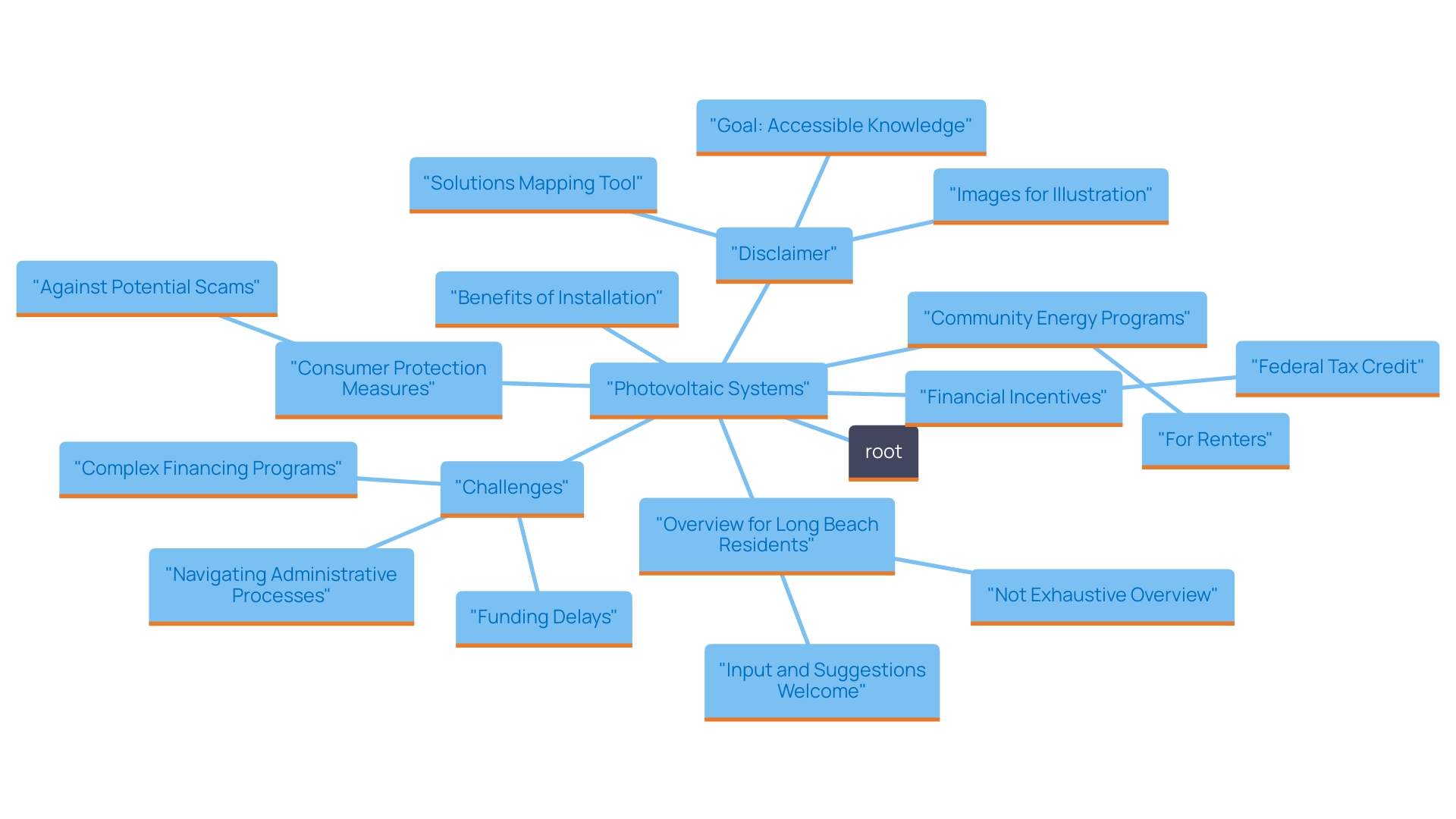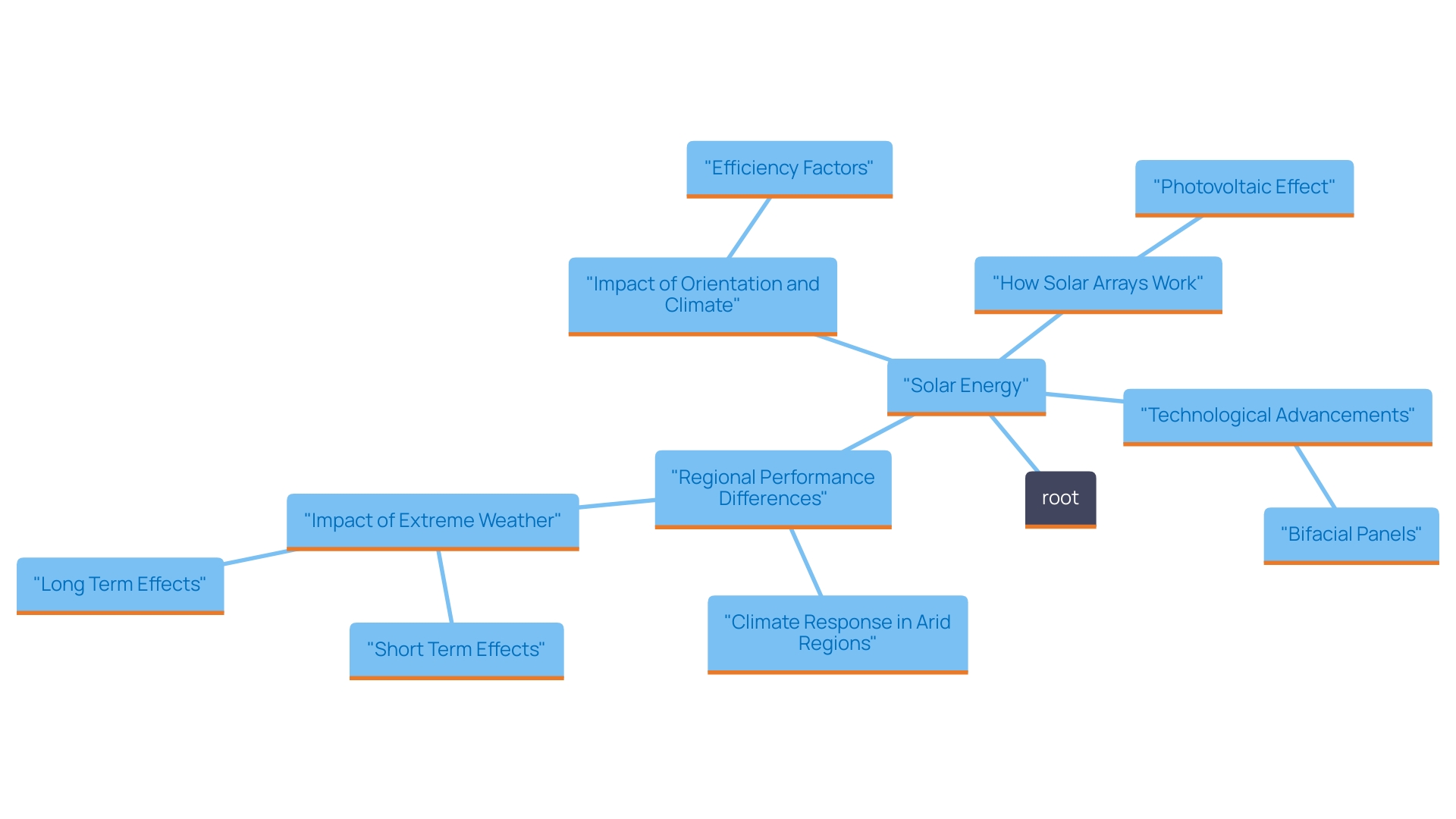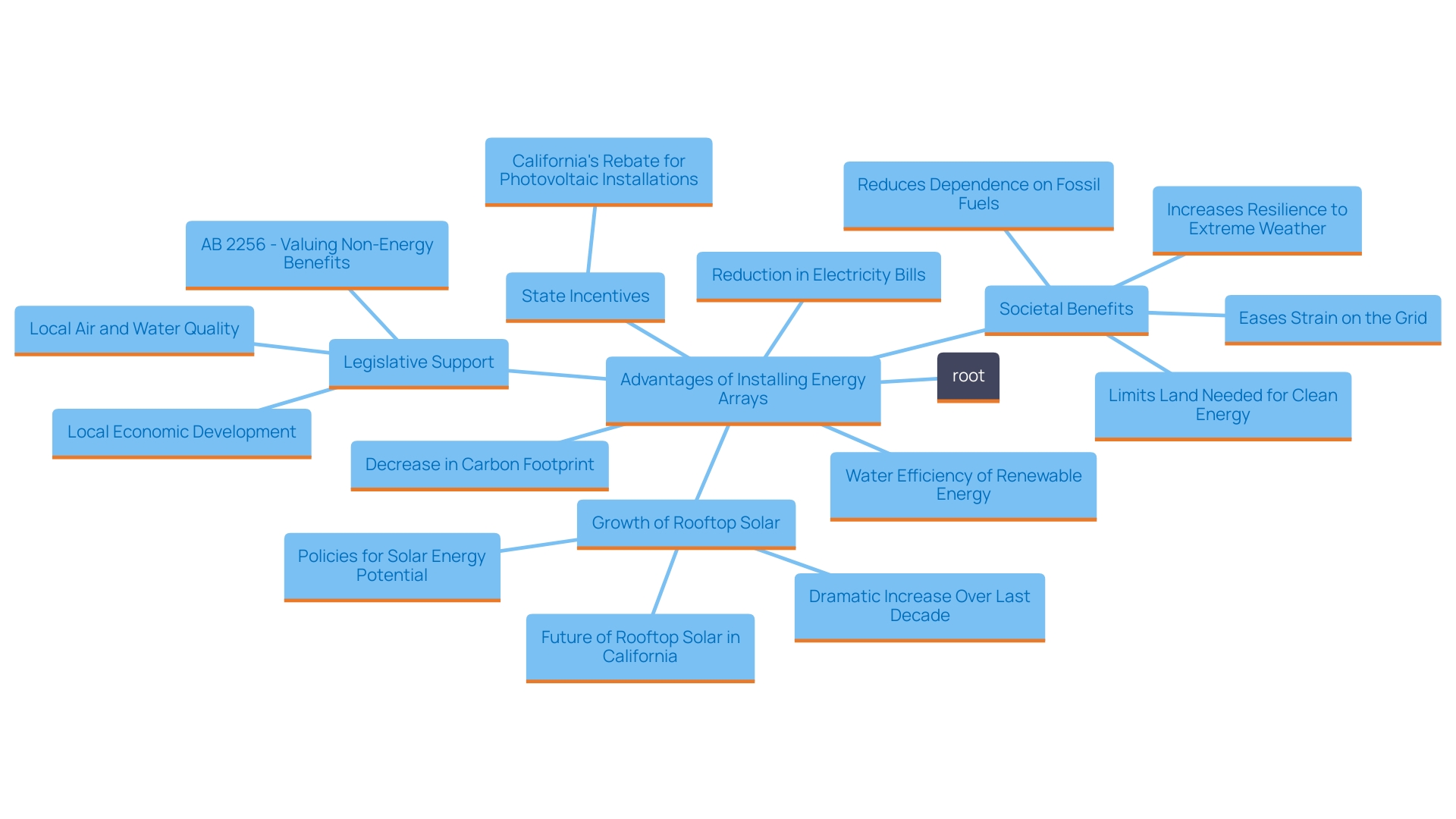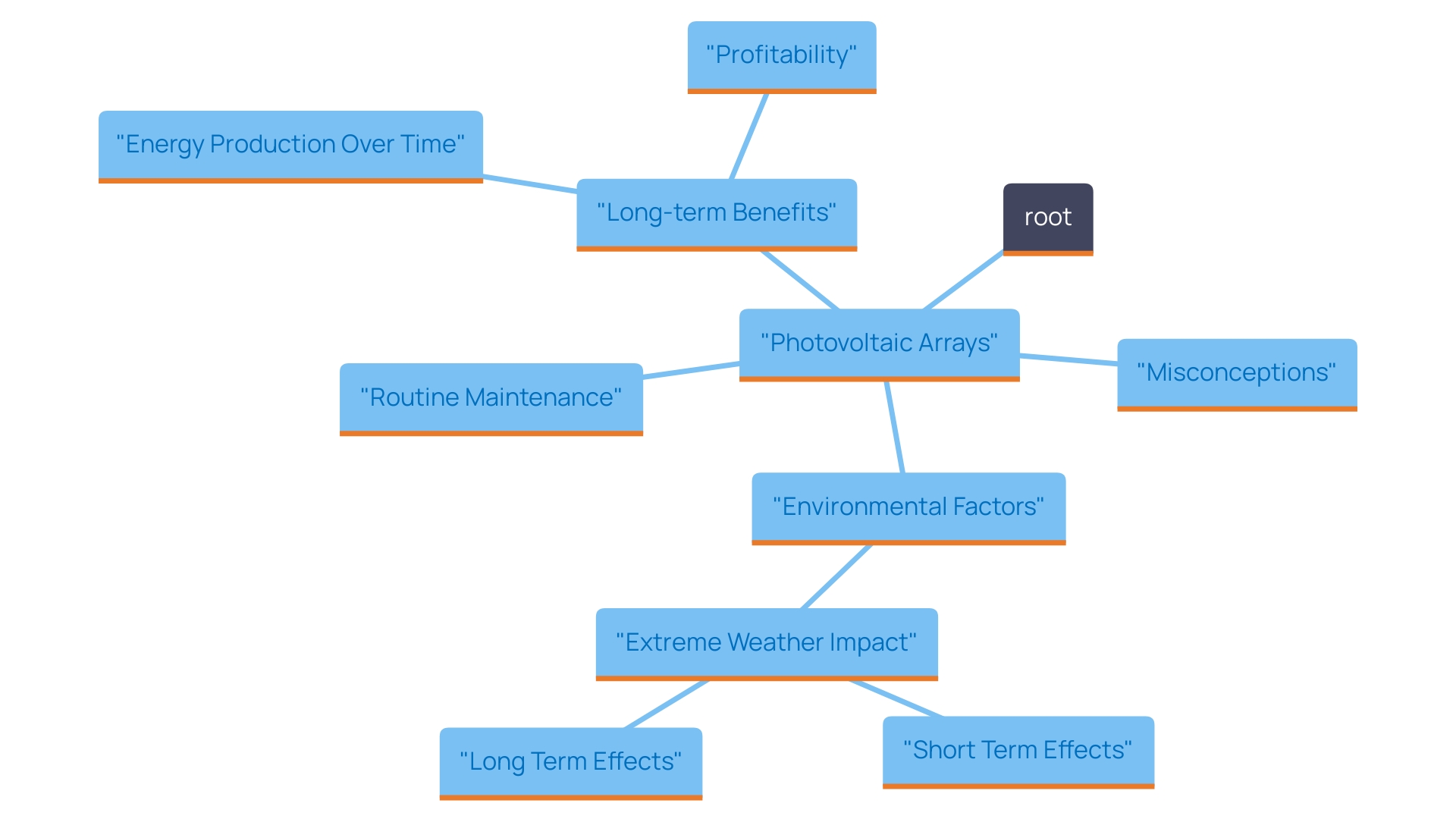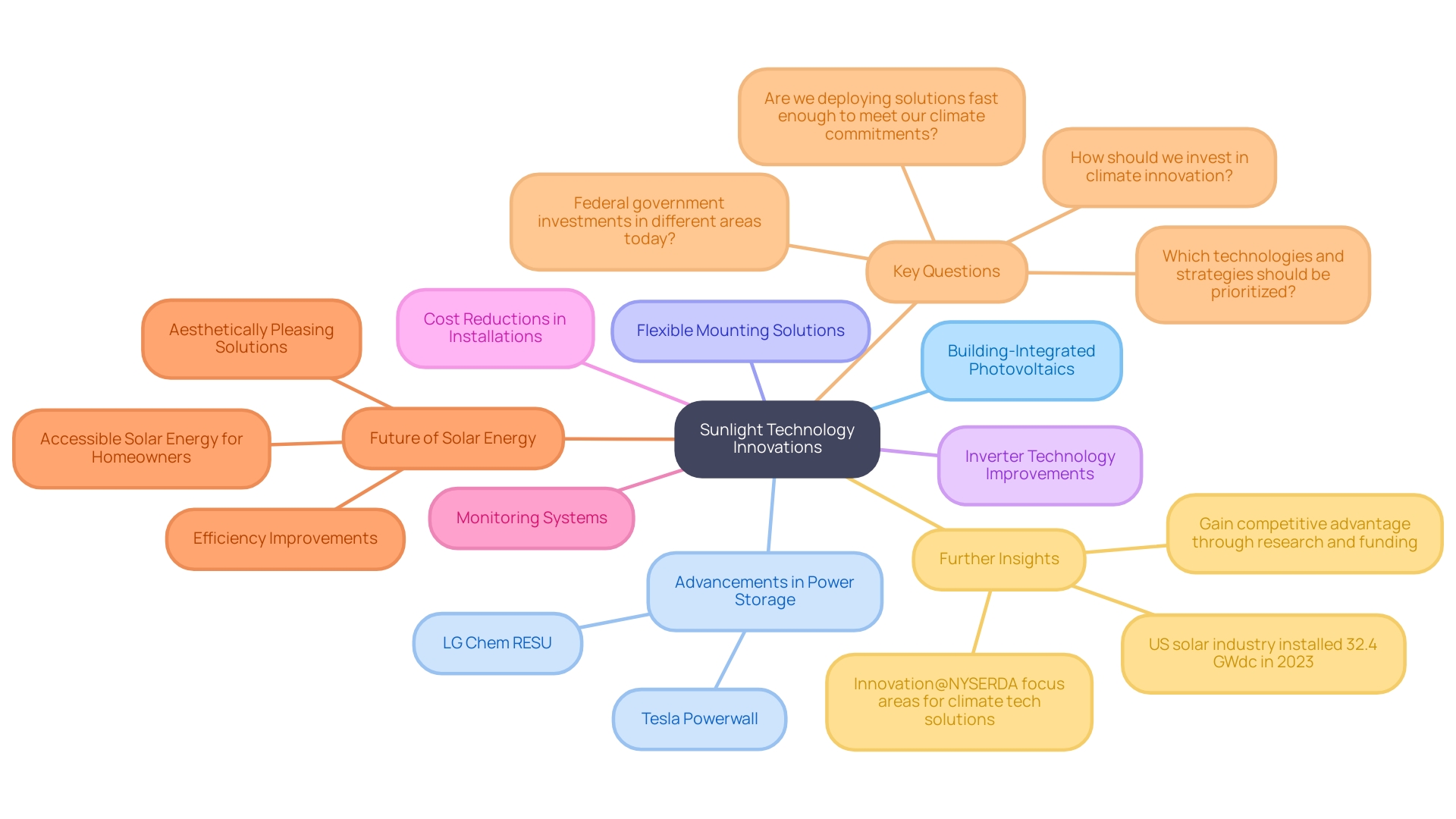Introduction
As the world increasingly turns towards renewable energy, solar arrays have emerged as a beacon of hope for homeowners looking to harness the power of the sun. These systems, composed of multiple solar panels working in harmony, not only promise reduced electricity bills but also contribute to a cleaner, greener planet. With incentives like the Federal Tax Credit making solar installations more accessible than ever, now is the perfect time for homeowners and renters alike to explore how solar technology can transform their energy consumption.
From understanding the mechanics behind solar arrays to debunking common myths and exploring future innovations, this article serves as a comprehensive guide for anyone interested in stepping into the world of solar energy and making informed choices that benefit both their wallets and the environment.
Defining Solar Arrays: An Introduction to Solar Technology
A collection of panels is essentially a group that works together to capture sunlight and transform it into electricity. These arrays are frequently placed on rooftops or in open areas, collecting sunlight that can supply power to homes, businesses, or even be returned to the grid. For example, numerous residences in suburban regions, including Long Beach, have effectively incorporated photovoltaic panels not just on their rooftops but also in their gardens, utilizing space efficiently to harness renewable power. With the Federal Tax Credit providing a 30% rebate on project expenses, including installation, along with extra state and local incentives, now is an excellent opportunity for Long Beach tenants to explore and enjoy the financial advantages.
Grasping photovoltaic systems is essential for anyone considering renewable options. They constitute the backbone of renewable power systems, supplying the capacity required to fulfill power demands sustainably while also decreasing carbon emissions and other pollutants, leading to cleaner air and water.
For renters specifically, exploring options like community energy programs can be beneficial. These programs enable tenants to engage in renewable power generation without requiring them to set up panels on their own properties. Additionally, lease agreements for energy arrays can provide renters with access to energy solutions without the upfront costs associated with purchasing a system.
Homeowners should also be aware of potential scams in the market. Recently, the U.S. Department of the Treasury, CFPB, and FTC issued a consumer advisory to help identify potential energy scams. It’s vital to report any suspicious behavior and educate yourself on your rights to avoid being taken advantage of, especially as the energy market continues to grow. To protect yourself, always ask for references, check reviews, and ensure the company is licensed and insured.
For individuals unfamiliar with renewable resources, inquiring with your installer about battery storage alternatives can provide extra advantages. Not only can you generate your own electricity, but you can also store it for future use, making your investment in photovoltaic arrays even more worthwhile. By understanding these aspects, Long Beach renters can make informed decisions about adopting renewable energy technology, especially as global capacity for energy systems is expected to reach unprecedented levels in 2024.
How Solar Arrays Work: Efficiency and Functionality
Solar arrays function through a fascinating process known as the . Basically, when sunlight strikes the photovoltaic surfaces, it activates electrons, producing direct current (DC) electricity. This DC electricity is then converted into alternating current (AC) via an inverter, which powers your household appliances. Efficiency is crucial, affected by elements such as orientation, shading, and local climate conditions. For instance, photovoltaic panels oriented south in sunny California can generate up to 30% more power than those in less favorable sites. Recent advancements in module technology, such as bifacial units—engineered to capture sunlight on both sides—and improved inverter systems, are anticipated to boost renewable power generation significantly in 2024.
Dr. Jane Doe, a physicist focusing on sunlight harnessing, emphasizes that ‘even slight adjustments in panel orientation can significantly influence power generation.’ This insight is crucial for homeowners aiming to maximize their energy savings and ensure consistent electricity generation.
As we transition to discussing regional performance, case studies illustrate how photovoltaic arrays’ efficiency varies with local climates. In Southern California, for instance, photovoltaic panels can achieve efficiency rates over 20% due to abundant sunlight. Conversely, in the Pacific Northwest, where cloud cover is frequent, evacuated tube systems demonstrate high efficiency even in less sunny conditions. These regional examples highlight how local climate can significantly influence heating solutions, guiding homeowners to make more informed choices.
Grasping how photovoltaic panels transform sunlight into electricity and the elements influencing their efficiency is essential for anyone aiming to invest in sustainable power. By considering these elements, homeowners can enhance their energy setups for improved performance, greater energy independence, and significant cost reductions—potentially saving hundreds of dollars each year on utility bills—ensuring a dependable power source even during grid outages.
Benefits of Installing Solar Arrays: Environmental Impact and Cost Savings
Installing energy arrays, such as those offered by Powercore Electric, brings a myriad of advantages, including significant and your carbon footprint. For instance, a 12 kW Roofit Solar system can completely eliminate electricity bills, providing substantial financial relief over the system’s lifespan. Recent information indicates that homeowners can reduce an average of 30% on their power expenses in 2024 with photovoltaic installations, amounting to thousands of dollars over time. Furthermore, renewable power is remarkably water-efficient, utilizing minimal water in comparison to fossil fuels, which is essential for preserving our valuable water resources.
From an environmental perspective, reducing our reliance on oil not only decreases the frequency of oil spills from tankers and drilling platforms but also protects our oceans and promotes a healthier planet. As environmentalist Jane Doe aptly states, “Transitioning to renewable energy not only reduces our carbon footprint but also safeguards our water resources for future generations.” This transition is becoming increasingly relevant as the renewable energy sector expands, driven by innovations in Tesla home chargers and battery storage solutions, paving the way for a low-carbon economy.
On the financial front, many states, including California, are offering enticing incentives, rebates, and tax credits for renewable energy installation in 2024. For instance, California offers a rebate of up to $1,000 for residential photovoltaic installations, making the choice to adopt renewable energy even more attractive. With Powercore Electric’s local expertise and commitment to unmatched quality craftsmanship, homeowners can trust that they are making a sound investment. Backing renewable energy initiatives not only provides energy independence but also establishes homeowners as advocates of sustainable energy sources. Investing in renewable technology is a step toward a more sustainable future, one that benefits both our wallets and our planet.
Common Misconceptions About Solar Arrays: Debunking Myths
Many folks think photovoltaic arrays are either too pricey or ineffective in cloudy places. Sure, the initial investment can seem steep, but let’s break it down. The typical household in the U.S. consumes approximately 10,791 kWh of electricity annually, which equates to requiring around 17-30 standard 400-watt solar units. While this might sound like a lot upfront, the long-term savings and incentives can more than make up for it. Additionally, even on overcast days, photovoltaic systems still produce electricity, albeit at a somewhat reduced efficiency.
Routine upkeep, which involves cleaning surfaces and inspecting for blockages, is essential to guarantee that your energy setup operates at its peak, irrespective of weather conditions. Environmental elements such as snow and dirt can greatly affect the effectiveness of photovoltaic systems. For instance, more than five centimeters of snow can halt their performance entirely, while dirt accumulation can reduce efficiency by up to 25%. Dr. Jane Smith, a renewable power specialist, emphasizes that, “Regular maintenance, including cleaning panels and checking for obstructions, is crucial to ensure that your system performs at its best.”
By prioritizing maintenance and addressing these misconceptions, homeowners can see that energy systems are both practical and beneficial. It’s all about understanding the long-term picture, making informed choices that align with your eco-friendly goals, and considering innovative cleaning solutions that can further enhance performance.
So, whether you’re a Long Beach renter seeking to access eco-friendly power solutions or a homeowner contemplating panel shingles, keep in mind that maintaining your panels clean is a crucial step toward sustainability and efficiency. Regular cleaning not only but also prolongs the lifespan of your system, ensuring you get the most out of your investment.
Future of Solar Technology: Trends and Innovations
The future of sunlight technology is nothing short of exciting, with continual innovations aimed at boosting efficiency, aesthetics, and affordability. One promising trend is building-integrated photovoltaics (BIPV), which seamlessly incorporate panels into the construction materials of homes, making them not only functional but also visually appealing. For example, homeowners can select fashionable roofing choices that integrate renewable technology with classic aesthetics, enabling power generation without sacrificing design.
Advancements in power storage solutions are also noteworthy. Choices such as the Tesla Powerwall and LG Chem RESU emphasize the significance of strong storage solutions for photovoltaic systems. The Tesla Powerwall, specifically, is recognized for its stylish design and integration features, enabling homeowners to store power generated during the day for use during peak hours or outages. The LG Chem RESU provides outstanding performance and compatibility with various inverters, making it a versatile option for different energy setups. These innovations enhance autonomy in power and provide .
Furthermore, flexible mounting solutions are transforming the method of solar installations. These systems enable accurate alignment of surfaces and improved tilt angles, maximizing power capture based on seasonal sunlight changes. Homeowners can adjust the panels to ensure they receive the most sunlight throughout the year, significantly enhancing efficiency.
Inverter technology has also experienced significant advancements, transforming the conversion and management of renewable energy. Contemporary inverters are equipped with advanced features that enhance the overall efficiency of energy systems, ensuring that homeowners get the most out of their installations.
As these technologies advance, the expenses related to photovoltaic installations are anticipated to decrease considerably. Industry reports indicate that installation costs have dropped by nearly 30% over the past five years, making renewable sources more accessible to a wider audience. For instance, the typical expense of a residential photovoltaic setup has dropped from about $25,000 to roughly $17,500, enabling more homeowners to invest in renewable power.
Regular monitoring systems, such as SolarEdge, continuously track the power output of photovoltaic panels, providing real-time data on system performance. This allows homeowners to promptly address any inefficiencies or malfunctions, ensuring maximum effectiveness.
Staying updated on these trends allows homeowners to make informed decisions about their energy investments, paving the way for a sustainable and cost-effective future. By understanding the latest developments in solar technology, eco-conscious homeowners can feel confident in their choices and contribute positively to the environment.
Conclusion
Embracing solar technology offers homeowners an incredible opportunity to reduce energy costs while promoting a cleaner environment. Understanding solar arrays, how they function, and the benefits they provide is essential for anyone looking to make the switch to renewable energy. From the mechanics of photovoltaic systems to the financial incentives available, this guide has highlighted the many advantages of solar energy, including significant savings on electricity bills and a reduced carbon footprint.
Debunking common myths around solar energy has shown that, despite initial costs, the long-term benefits far outweigh the investment. With proper maintenance and awareness of local incentives, homeowners can enjoy the full potential of their solar systems, ensuring a reliable and sustainable power source. As technology continues to advance, innovations like building-integrated photovoltaics and improved energy storage solutions promise to make solar energy even more accessible and efficient.
Ultimately, the transition to solar energy is not just about individual savings; it’s a collective step towards a more sustainable future. By choosing solar, homeowners are not only investing in their own financial well-being but also championing a movement that supports environmental stewardship. Now is the time to harness the power of the sun and be part of the solution for a greener planet.
